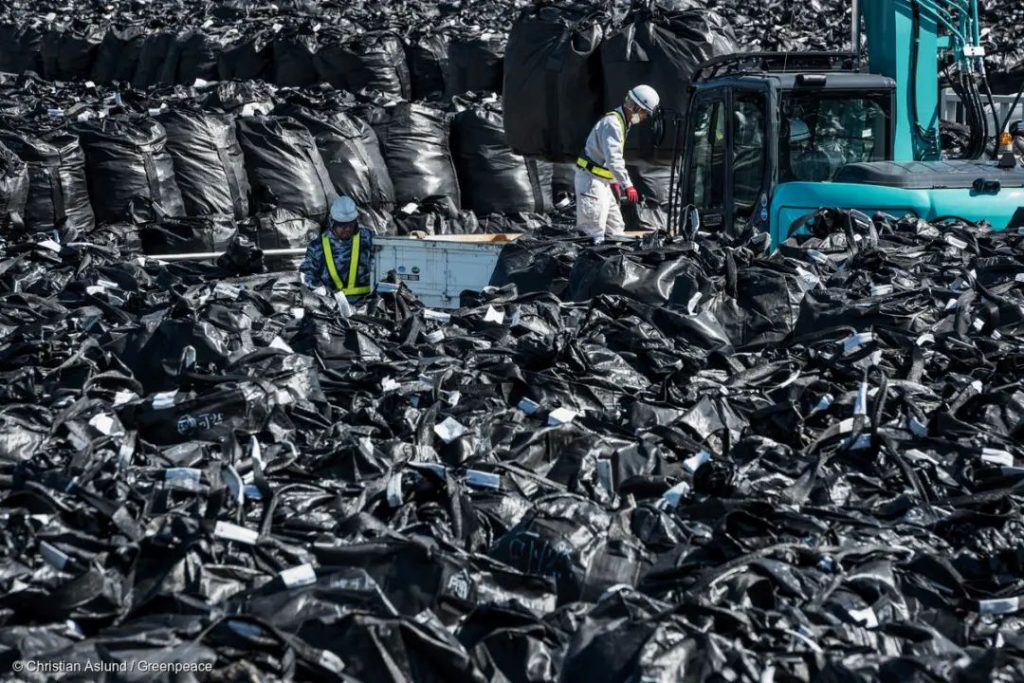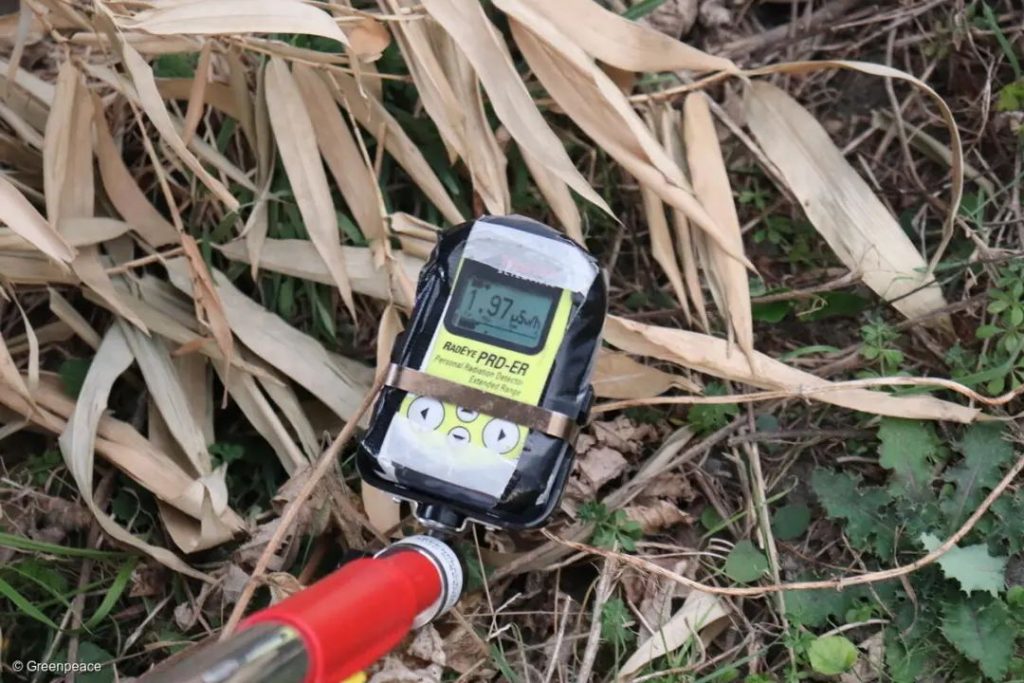Regarding the nuclear sewage stored in Tokyo Electric Power Fukushima Daiichi nuclear power plant, the Japanese government has basically decided to treat it in the form of putting it into the sea, and a cabinet staff meeting will be held as early as April 13 and formally decided.
It is reported that Tokyo Electric Power has prepared about 1,000 water storage tanks, and 90% of them are now full. The total capacity of all water storage facilities is about 1.37 million tons, and it is expected to reach the limit by the autumn of 2022.
Greenpeace, an international environmental organization, strongly condemned this. On April 12, Ichie Suzuki, director of the Climate and Energy Project of the Greenpeace Japan Office, said in an interview with the Science and Technology Daily that if the Japanese government cabinet formally makes a decision to discharge more than 1.23 million tons of nuclear radiation wastewater currently stored at the Fukushima Daiichi nuclear power plant into the Pacific Ocean, it is in disregard of the ecological environment.
Decision.” It not only disappoints the residents of Fukushima again, but also exposes residents living in the surrounding area and the Pacific Rim to the risk of nuclear radiation. Despite Japan’s technology and conditions to build more long-term storage tanks at the location of the Fukushima Daiichi nuclear power plant and the surrounding no man’s land, the risk of nuclear radiation proliferation is kept to a certain extent minimized. However, the government cabinet chose the most cost-saving way to dump nuclear sewage into the Pacific Ocean.
In view of the large total amount of wastewater and the high concentration of tritium after the Fukushima nuclear accident, Liu Xinhua, chief expert of the Nuclear and Radiation Safety Center of the Ministry of Ecology and Environment, also said in an interview with the Science and Technology Daily that the Japanese government should consider further treatment measures, including increasing wastewater storage tanks to avoid hasty discharge and discharging wastewater after treatment. Allow enough time for preparation.
There is no precedent for the world to discharge the sea after treatment of nuclear wastewater.
In 2011, there was an accident at the Fukushima Daiichi nuclear power plant, and it has been 10 years since the nuclear reactor stopped operating. Liu Xinhua said that there are three main sources of radioactive wastewater from the Fukushima nuclear power plant, such as the original coolant of the reactor, the newly injected water to continuously cool the core after the accident, and the large amount of groundwater and rainwater that penetrated into the reactor.

“After the Fukushima accident, Tokyo Electric Power Company set up an accident radioactive wastewater purification treatment device, including strontium and caesium adsorption device, reverse osmosis membrane desalination device and polynuclide removal device (ALPS) to remove most radionuclides from the accident radioactive wastewater.
And a large number of storage tanks have been set up to store treated and purified wastewater. Liu Xinhua said that the wastewater from the Fukushima nuclear power plant that the Japanese government intends to release to the sea is treated wastewater. However, these wastewaters still contain radionuclides such as tritium, strontium, caesium and iodine.
Liu Xinhua pointed out that historical nuclear accidents, such as the Chernobyl and Sanli Island nuclear accidents, are atmospheric releases. There have been no nuclear accidents similar to the Fukushima nuclear accident that produced a large amount of wastewater, so there is no precedent for wastewater discharged to the sea after the treatment of the nuclear accident.
“At present, there is no regulation for international third-party agencies to inspect and re-exhaust treated nuclear wastewater, nor is there any relevant inspection procedures and standards.” Liu Xinhua said.
The method of sewage discharge from the sea still needs further research.
It is reported that radionuclides cannot decay in a short time. Storage in tanks is not the appropriate way to solve the problem of nuclear wastewater. Million cubic meters of treated wastewater stored at Fukushima Nuclear Power Plant is a major source of safety risk, and there are huge risks that may be caused by earthquakes, tsunamis and other factors. Therefore, the Japanese government is increasingly eager to solve the problem of post-treatment wastewater disposal.
In fact, there are other ways to discharge wastewater into the Pacific Ocean. Since 2013, the Japanese government has evaluated five post-treatment wastewater treatment solutions for strata injection, discharge into the ocean, steam release, hydrogen release and underground burial, and examined the feasibility and possible limitations of each program, including duration, cost, scale, secondary waste, and radiation exposure to staff. Irradiation, etc.
In February 2020, the ALPS Water Purification Subcommission released the assessment report of the Wastewater Treatment Program after the Fukushima nuclear accident in Japan concluded that both marine discharge and steam release are feasible programs, among which marine discharge is more convenient, and other disposal programs are in terms of economy, technical maturity or timing. Poor consideration.
“There is no precedent for the disposal of wastewater after nuclear accident treatment, and the disposal method still needs further research.” Liu Xinhua said that the extent of the impact of wastewater discharge on the marine environment depends on the type, concentration and total amount of radionuclides discharged, as well as the interaction between specific radionuclides and key elements of the marine environment such as sediments and marine organisms.
However, after a large amount of wastewater from Fukushima is discharged into the Pacific Ocean, it will certainly lead to the enrichment of radionuclides in marine sediments and marine organisms in the sea area near the discharge point. Some radionuclides will migrate and diffuse to other sea areas with ocean currents. Japan is China’s close neighbor. Whether Japan’s wastewater discharges are discharging from coastal or ocean-going public waters, radionuclides will spread in the waters of the North Pacific Ocean with ocean currents. The sea areas under China’s jurisdiction will inevitably be affected by transboundary pollution of radioactive substances.
Liu Xinhua suggested that the Japanese government should adopt wastewater treatment technology and devices with high decontamination factor to further purify excess radionuclides and reduce the radionuclide content in the treated wastewater as much as possible; study tritium treatment technology and disclose the research progress and results in a timely manner. If feasible technology, it should be used immediately in tritium in wastewater. Reason.
Fukushima’s decontamination progress is slow, and the current water cooling should be replaced by air conditioning.
After the Fukushima nuclear spill on March 14, 2011, the nuclear radiation investigation team of Greenpeace Japan Office was one of the first environmental organizations to reach Fukushima, and has conducted 32 investigations continuously over the past 10 years.
On March 4, 2021, Greenpeace released the report “Fukushima Nuclear Radiation Survey for the Decade 2011-2020”, showing that although the Japanese government has established an 840 square kilometers of “special decontamination area” and carried out decontamination work in the region, there is still 85% of the area of radioactive pollution; the same as At that time, there was no specific timetable to show that the level of nuclear radiation could reach 0.23μSv/h (microsylvert/h) proposed by the Japanese government, and some residents will still live in concentrations of 1mSv/y (mSv/yr) of nuclear radiation exceeding the recommended safety value for a long time.

Another report released by Greenpeace, Evaluation of the Decommissioning Program of Fukushima Daiichi Nuclear Power Plant, found that the current end-of-life plan of Fukushima Daiichi nuclear power plant was difficult to achieve in 30 to 40 years. Moreover, a large amount of nuclear fuel residues and cooling sewage from nuclear power plants are still temporarily stored, and there is a lack of feasible plans to clean up and recover them.
Greenpeace suggests that in order to avoid a continuous increase in nuclear radiation pollution wastewater, cold air should replace the current water cooling when cooling nuclear fuel rod debris. Facing the problem of continuous groundwater infiltration, the current site of the Fukushima Daiichi nuclear power plant should build a moat to block groundwater.



